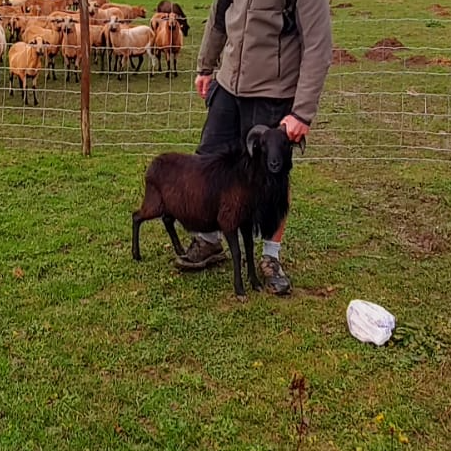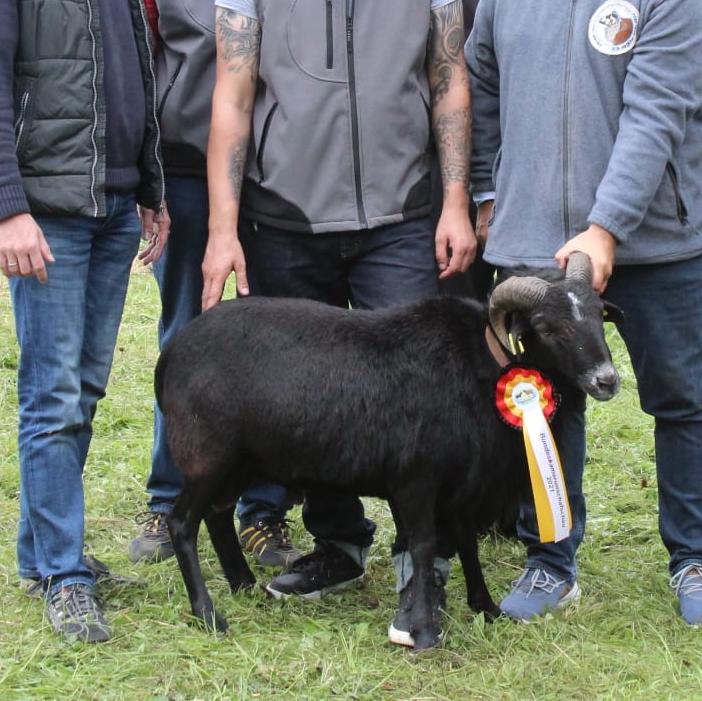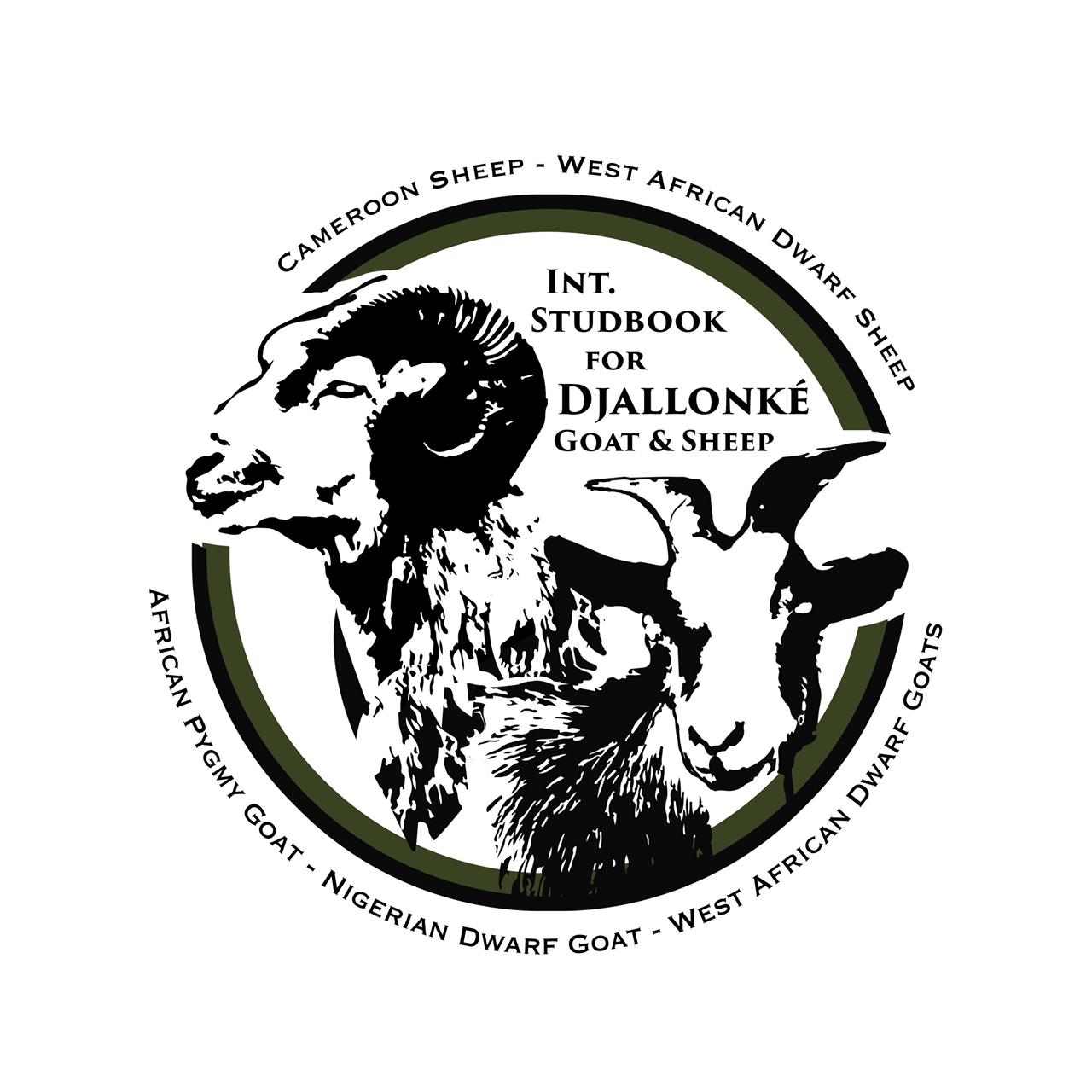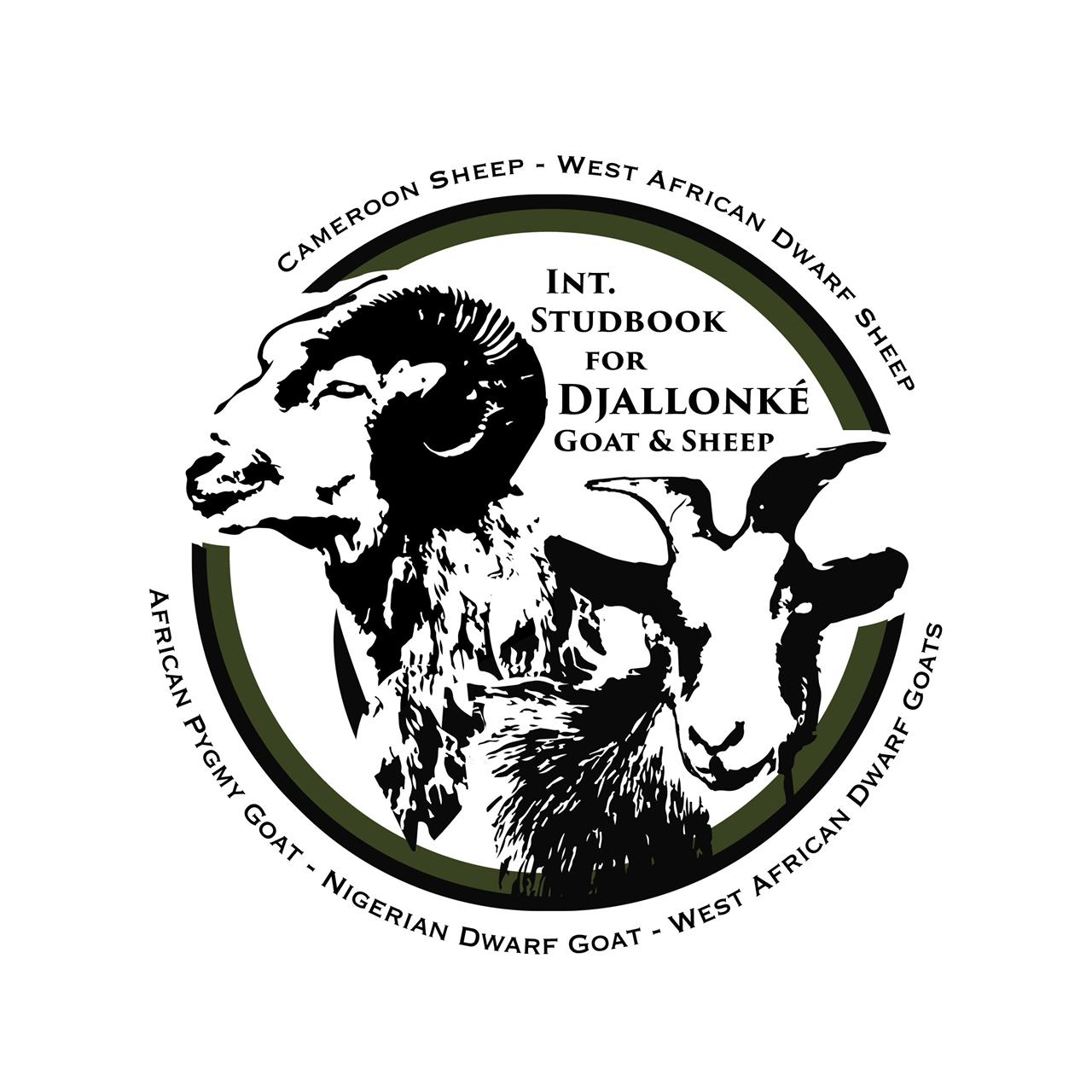Cameroon Sheep in Europe.
Introduction waves in Europe
In the first quarter of 19th century the first Djallonké sheep of the black bellied variety where imported into the Netherlands and later England. Where they ended up in zoos as food for wild animals such as lions. A second wave of introductions to Europe happened in Germany at the end of the beginning of the 20th century when the colonial administration of the German empire extracted sheep from its German colony in the East Forest (Moloundou) of Cameroon. (Amongst other importers were the German wildlifetrader Carl Hagenbeck (06/10/1844-04/14/1913) who organized four to five expeditions to capture animals in West Africa. The dwarf sheep found there were taken on journeys as live food. What was not used along the way was sold in Hamburg through the pet store Hagenbeck. )
Followed by a third wave of imports in the 1990's in England.
Release of zoo surplus (1980-1990)
From the 1980's and 90's zoo surplus started to be sold to private individuals. eg in the 1990's surplus Cameroon (Djallonké) sheep were sold by a former head zookeeper of the Belgian amusement and animal park "Bellewaerde Park" to private individuals in the region around Ypres, the Westhoek of Flanders. Similar events occurred in the Netherlands, Germany and the UK. Until 1990-95 the Djallonké "Cameroon" sheep population in western Europe was purebred and kept its dwarf size. The sheep became popular under the synonym "Cameroon sheep".
Crossbreed population in Europe (1990-2022-...)
The cameroon sheep gained popularity and spread all over the
UK, the Netherlands, Germany
and Belgium.
Meanwhile, the "Mouton Antilais", introduced in France between the 17th and 19th centuries, were gaining ground in France. As well as the Martinique that originated from the larger Barbados Black Belly. Subsequently, In the 20th century, many Barbados sheep were brought from Barbados to the UK and mainland Europe. And just like the Djallonké sheep, this breed started to gain popularity. While ignorant people started crossing with breeds such as Mouton Antilais, Barbados Black Belly and even with Soay, Mouflon, Oussant, Dorper, Wiltshirehorn... 3 purebred clusters were preserved, namely in the west hoek of Flanders in Belgium, the Netherlands and in the UK.
In the early 1990s, a Cameroonian Sheep Association "Verein der Kamerunschaf" was established in Germany, which brought together 30 sheep herders with a total of 400 sheep. By the end of 2020 they had 210 members. What started as a noble project in the early 1990s. Has grown or rather derailed into a sheep population that is no longer purebred and certainly no longer meets the breed standard. Until 1990, all zoos in Europe with a Cameroon sheep collection bred on the basis of the breed data from the national research institutes in Africa and their colonial data. All the ''Cameroon'' sheep in Europe were uniform. And were exactly the same as the sheep in Africa. Suddenly from 1992 to 2005 the German Club started to breed sheep that were 10-20cm higher at the withers up to 70-75cm. And this while the rest in Europe still bred on the original breeding data. The Germans then establish a breed standard that they reduce to a maximum of 65cm in 2005. Mr. Marcel Muller of the German club himself claimed that the higher height at the withers was obtained due to selective breeding and feeding. And that the rest in Europe did wrong selections. While in the previous months he himself admitted that crossings had happened to increase meat production. This at the expense of the original breed. The Germans have the audacity to still call the breed "Kamerunschaf" (Cameroon sheep), while their sheep are no longer the same as those in the 3 cluster populations. They are bigger, thicker, are almost all G3 scrapie sensitive and no longer resistant. Their sheep have been exported to Austria, Czech Republic, Croatia, Poland, Italy... Where breeders continue to breed these sheep as "Cameroon sheep". Even in 2022, in Romania. Some ignorant breeders even breed sheep with heights at the withers between 70-75cm with animals originating from Germany. The situation could not get any worse with German animals that ended up in Belgium and the Netherlands via Dutch and French detours. Whether or not legally imported or smuggled. As a result, there is a cocktail of Cameroon crosses in Flanders and the Netherlands, of which more than 80% is not purebred. In the period from 2019 - 2021, more than 250 sheep were purchased by ISDGS from private individuals in Flanders and the Netherlands. 80% turned out not to be purebred after genome sequencing in the lab. When asked about the origin of the sheep, 90% had a local cross-breeding background and 10% was linked to Germany. Sheep from the German Cameroon sheep club have also ended up in the European Aquarium and Zoo Association (EAZA) as well as in the international zoo surplus list of the Netherlands-based "Zoo Services" via the Stuttgard zoo. The German Cameroon sheep were also exported to France where they were unknowingly crossed with the Mouton Antilais, and the Barbados Black Belly.
From the 1990s, the Dutch sheep owner Boudewijn Kooijman started developing a new moulting sheep. By crossing Cameroon and Barbados Blackbelly sheep, Boudewijn laid the foundation for the "Maasduinschaap" breed www.maasduinenschapen.nl . In addition, he bred with a few Texel sheep and with Romanov sheep. Finally, he also crossed a limited number of Cofok-Rijnlam A sheep and German Witkop. The result is a sheep that looks slightly larger than a Cameroon sheep with white variegated markings. From 2020, the first Maasduin sheep started to find their way to the north of Belgium. Mainly in the provinces of Antwerp and Limburg. From the spring of 2022 it became clearly visible how the Dutch Maasduin invasion became mixed with the existing Cameroon cocktail sheep in Belgium. Suddenly, 350 people had so-called "Colored Cameroon sheep". Where in previous years there was rarely talk of a variegated lambs.
The search for purebred sheep in Belgium & the Netherlands. (2019-2022)
In 2019 Mr. Jean Kiala-Inkisi, International President of AOBA (African Ornamental Breeders Association) came to Belgium on a family visit. His brother asked him to buy sheep to graze a meadow. To his own surprise, he found that Cameroon sheep were also bred in Belgium. He bought a number of sheep from various breeders via the advertisment website 2dehands.be and marktplaats.nl . The composite herd expanded from 3 to 5, 10 to 20 sheep. But it soon became clear to him that there was no uniformity among the Flemish and Dutch population on offer. Immediately he suspected that the majority of his purchased sheep were crossbreeds and not purebred. That's when he decided to subject all his sheep to DNA tests. The DNA samples were immediately sent to the AOBA HQ. After analysis it turned out that unfortunately 15 of the 20 sheep purchased were not purebred.
Meanwhile, Jean also established that there was no studbook or breed club for the Cameroon sheep in Flanders, let alone elsewhere in Western Europe. The German club used the wrong standard and the Dutch VSS (Association of Special Sheep Breeds) was forced to pull the plug on the breed due to lack of knowledge and members. It just so happened that he managed the international studbook of this breed in Africa. And so it was only a small administrative effort to open it to Europeans in March 2020.
Jean continued his search for purebred sheep in Flanders. In the period from March 2019 to December 2021, more than 250 "Cameroon" sheep were purchased by ISDGS from private individuals all over Flanders (via 2dehands.be) and the Netherlands (via Marktplaats.nl). Once again, lab analysis showed that 80% or 200 of the animals purchased from 47 different private individuals were not purebred. The only healthy purebred sheep he could find in Flanders were with
F.Bossaert and
M.Pattyn in the Westhoek,
J&D Duchateau in the Kempen,
L.Haesen in the Limburg and
K.Tollet
in Flemish Brabant. The which at that time had a total of about 100 "purebred" sheep. A breeding program was started with these animals. After a search of three years with many disappointing results, he decided to stop his search from February 25, 2022. And to close the studbook for mainland Europe again.
European population
(2022)
Within the European population one can speak of an unconscious schism;
- Cameroon sheep with the correct breed standard that still resemble their Djallonke ancestors. Animals that were kept purebred in zoos and subsequently preserved by private individuals. (A large number of which are registered with the ISDGS)
- Sheep from the Westhoek region in Belgium
- and a majority of sheep from the UK
- Cameroon sheep that have been crossbreed since the 1990s.
- Belgian, Dutch and French unregistered cocktail sheep
- Sheep with roots in the German "Verein der Kamerunschaf"
- Sheeps in Central Europe with roots in the German "Verein der Kamerunschaf"
- and a minority of sheep from the UK
The most common crosses on the European mainland are;
- Belgium
Cameroon x Barbados Black Belly
Cameroon x Oussant
Cameroon x Mouflon
Cameroon x Soay
Cameroon x Wiltshirehorn
Cameroon x Dorper
Cameroon x Maasduinen
- The Netherland
Cameroon x Barbados Black Belly
Cameroon x Maasduinen
- Germany
Cameroon x Barbados Black Belly
Cameroon x Mouflon
Cameroon x Soay
- France
Cameroon x Barbados Black Belly
Cameroon x Mouton Antilais
Cameroon x Martinique
Cameroon x Mouflon
Anno 2022, the "purebred" population in "mainland Europe" has just under 250 animals, spread over only 25 breeders in 4 countries. Of these, 100 are registered in the ISDGS studbook.
From autumn 2022, the search for purebred sheep in Europe will continue in the UK. DNA testing and judging are underway.
Global Population status
Out of ignorance or deliberately to lure visitors? It is often claimed by international zoos and private breeders that the Cameroon sheep is a rare breed with less than 1000 heads left. This is incorrect. This is partly due to the misnomer in Europe and America. The breed is one of the most popular and widely distributed sheep breed in Africa. The population number for the Djallonké is estimated at 1.8 million in Ghana, 1.2 million Ivory Coast, half a million in Guinea , half a million in Togo, and considerable number are found in many other Western African countries. Even if one would only focus on the blackbelly color variation. Even then there are tens of thousands walking around in Cameroon, Rep. Congo, DR. Congo, Ghana and Guinea Bissau. And AOBA-ISDGS has its own herds with 5000 animals that are genome sequenced, originating from Europe. Thus it is not at a risk of disappearance.
Comparison
International breed standaard (FAO, ILRI, AOBA-ISDGS)
Breed name: Djallonké
synonym used in some regions of Cameroon: Cameroon sheep
- Ram weight: 25-30 kg (82 lb) (Up to 35 kg is accepted)
- Ewe weight: 20-25 kg (55 lb) (Up to 30 kg is accepted)
- Ram height at the withers: up to 50-60 cm (Up to 65 cm is accepted)
- Ewe height at the withers: up to 40-50 cm (Up to 55 cm is accepted)
- Horned + Polled
German breed standard (VDL)
Breed name: Cameroon sheep (German: Kamerun schaf)
- Ram weight: 45-60kg
- Ewe weight: 35-50kg
- Ram height at the withers: 60-70 cm
- Ewe height at the withers: 58-60 cm
- Horned
.
Cameroon sheep in the UK (little but within the correct breed standard)

Kamerunschaf (Cameroon sheep) (within the German standard and unacceptable within the international standard)



